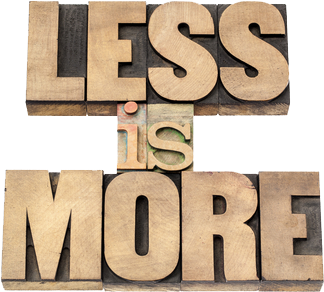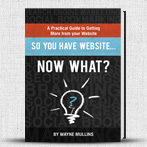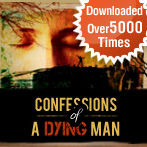Why Doing Less In Business Is Better Than Doing More
Posted by Wayne in Books, Time Management
Win a copy of Essentialism – The Disciplined Pursuit of Less
In a world of instant access and 24/7 connectivity, it is getting harder and harder to determine where and what should get our attention. With more responsibilities, more demands both at work and at home; the more expected, inspected, and dissected we feel the ever increasing pressure to do more.
With the constant pull and the constant ping of yet another message to be returned, post to be liked, and phone call to return, it’s no wonder so many people feel overworked and overwhelmed.
In a world whe
The underlying theme in Greg McKeown’s recently released book, Essentialism – The Disciplined Pursuit of Less, is that if you don’t prioritize your life, someone else will.
When I read this tagline, I knew I needed to read this book.
So what is essentialism?
“Essentialism is not about how to get more things done; it’s about how to get the right things done. It is about making the wisest possible investment of your time and energy in order to operate at our highest point of contribution by doing only what is essential.” -page 5
Sounds great on paper, but how? How can we determine what is most important, what should get our time and attention, and what our priorities should be? Over the next couple of hundred pages, Greg lays out the blueprint for becoming more by doing less.
The journey begins with helping his readers to gain an understanding of what essentialism is, and then quickly moves into how to determine what should stay and what should go.
The first step in the journey to becoming an essentialist is embracing the power we have to choose.
“We often think of choice as a thing. But a choice is not a thing. Our options may be things, but a choice – a choice is an action. …we may not always have control over our options; we always have control over how we choose among them.
…we have overemphasized the external aspect of choices (our options) and underemphasized our internal ability to choose (our actions).” – page 35
Once we remind ourselves that we do have the power to chose, Greg then reminds us that not everything (despite what we currently may believe) is of equal importance.
“Many capable people are kept from getting to the next level of contribution because they can’t let go of the belief that everything is important.” – page 49
Part of the process of becoming an essentialist, and reaping all the benefits that come with along with it, is accepting the fact that we’re going to have to make trade-offs.
“We can try to avoid the reality of trade-offs, but we can’t escape them.”
Greg shares the following story to help drive home the point.
“Jim Collins, the author of the business classic “Good to Great”, was once told by Peter Drucker that he could either build a great company or build great ideas but not both. Jim chose ideas. As a result of this trade-off there are still only three full-time employees in his company, yet his ideas have reached tens of millions of people through his writing.” – page 55
Explore – How Can We Discern the Trivial Many From the Vital Few?
This section is designed to help the reader place value on what is critical, and what can be ignored. Greg provides a framework to help his reader determine the vital few. The framework consists of:
Escape – “In order to have focus we need to escape to focus. …the faster and busier things get, the more we need to build thinking time into our schedule. And the noisier things get, the more we need to build quiet reflection spaces in which we can truly focus.”
Greg ends the chapter with the story of how Bill Gates purposely and regularly takes an entire week off to simply think and read.
“…what I didn’t know was that it goes all the way back to the 1980’s and that he stuck to it through the height of Microsoft’s expansion.”
In other words, twice a year, during the busiest and most frenetic time in the company’s history, he still created time and space to seclude himself for a week and do nothing but read articles (his record 112) and books, study technology, and think about the bigger picture.
Look – Learning to look past the surface to see what matters most is key to embracing the vital few. Think more like a journalist, looking past all the minor details so that you’re able to see the bigger – more important – picture.
Play – “Play doesn’t just help us to explore what is essential. It is essential in and of itself.”
Sleep – Everyone knows the important role sleep plays in our ability to function at high levels of performance; and yet so few people protect this asset.
“Our highest priority is to protect our ability to prioritize.” And sleep plays an important role in helping us see priorities clearly.
Don’t think you have a problem getting enough sleep, and that you place enough value on sleep? Try this…
“If you think you are so tough you can do anything I have a challenge for you. If you really want to do something hard: Say no to an opportunity so you can take a nap.”
Select – “If it isn’t a clear yes, then it’s a clear no.” In this chapter, Greg provides guidelines for helping determine if you should say yes, or no, when presented with options. Both the 90% rule and the opportunity matrix are simply, yet profoundly powerful, tools for helping determine if our response should be “yes” or “no.”
With a clear understanding of what we must protect, now it’s time to move to the final two sections of the book – Eliminate and Execute.
Eliminate – How Can We Cut Out The Trivial Many?
This section begins with a chapter on gaining clarity. Before you can start cutting the trivial away, it’s important that we have a clear understanding of what’s vital – and what’s trivial.
“When we are unclear about our real purpose in life – in other words, when we don’t have a clear sense of our goals, our aspirations, and our values, we make up our own social games. We waste time and energies on trying to look good in comparison to other people. We overvalue nonessentials like a nicer car or house, or even intangibles like the number of our followers on Twitter or the way we look in our Facebook photos. As a result, we neglect activities that are truly essential, like spending time with our loved ones, or nurturing our spirit, or taking care of our health.” – page 123
“We need to challenge ourselves with: If we could only be truly excellent at only one thing, what would it be?”- page 127
Greg provides some simple tools and exercises to help determine what your essential intent should be.
With essential intent defined, it’s now time to begin eliminating those things from our lives that distract us – those things that hinder us from focusing on our essential intent.
“The right ‘no’ spoken at the right time can change the course of history.” The simple two letter word “no” is what gives you the power to take control.
“Have you ever said yes when you meant no simply to avoid conflict or friction? Have you ever felt too scared or timid to turn down an invitation or request from a boss, colleague, friend, neighbor, or family member for fear of disappointing them?” – page 132
“When people ask us to do something, we can confuse the request with our relationship with them. Sometimes they seem so interconnected, we forget that denying the request is not the same as denying the person.” – page 137
“I am simply saying everyone is selling something – an idea, a viewpoint, an opinion – in exchange for your time. Simply being aware of what is being sold allows us to be more deliberate in deciding whether we want to buy it.” – page 138
“Essentialists accept they cannot be popular with everyone all of the time.” – page 139
“Essentialists don’t say no just occasionally. It’s part of their regular repertoire.” – page 140
But how? How can we possibly say “no” when we’re so invested in what we’re doing? The answer is by first identifying why we are so strongly holding on to previous commitments – even though they may no longer serve us.
As Greg points out, we need to be aware of sunk-cost bias, the endowment effect, and status quo bias; as each of these rob us of our ability to properly discern what is necessary.
The Latin root of the word decision (cis or cid) literally means “to cut” or “to kill.”
Once you make a decision, you have to be willing to cut off everything else that will hinder you staying committed to your decision.
Execute – How Can We Make Doing the Vital Few Things Almost Effortless?
It’s show time. Now it’s time to actually begin removing the nonessential – everything that is not part of the vital few.
A critical mind set of an essentialist is: An essentialist produces more – brings forth more – by removing more instead of doing more.
“Often we don’t take the time to really think about which efforts will produce results and which will not. But even when we do, it is easier to think of execution in terms of addition rather than subtraction.” – page 189
We have to learn to identify the constraints, and the bottlenecks – those obstacles that are hindering our success. Only once the constraint is identified and removed can we possibly hope to reach our goals.
An essentialist understands and embraces the fact that small wins lead to big wins. “Of all the things that can boost emotions, motivation, and perceptions during a workday, the single most important is making progress in meaningful work.”
One powerful way to ensure that small wins occur on a regular basis is by creating routines. “Routine is one of the most powerful tools for removing obstacles. Without routine, the pull of the nonessential distractions will overpower us. But if we create a routine that enshrines the essentials, we will begin to execute them on autopilot.”
What matters most? “When we look back on our careers and our lives, would we rather see a long laundry list of ‘accomplishments’ that don’t really matter or just a few major accomplishments that have real meaning and significance?”
As an entrepreneur, being an essentialist actually boils down to living a life the really matters. It’s about understanding what’s truly important. It’s about those around us becoming better as a result of their interaction with us, our team, or our company.
It’s about…
…doing the vital few – those things that will enable us to leave our mark on the world.
Win a Copy of Essentialism – The Disciplined Pursuit of Less
- Likes, Shares, & Comments WON'T Put Money In Your Bank Account.
- In Our Free Course: Crush It On Facebook In 30-Days Or Less
- You'll Discover: A Simple Facebook Strategy We Used To Take a Client From Losing $10k Each Month To Making Thousands...In Only 86 Days.
- The 3-Step Formula We Used To Increase Another Client's Sales By Over $9,000 per Month (and they're spending less than $400 per month on Facebook Ads)





One thought on “Why Doing Less In Business Is Better Than Doing More”